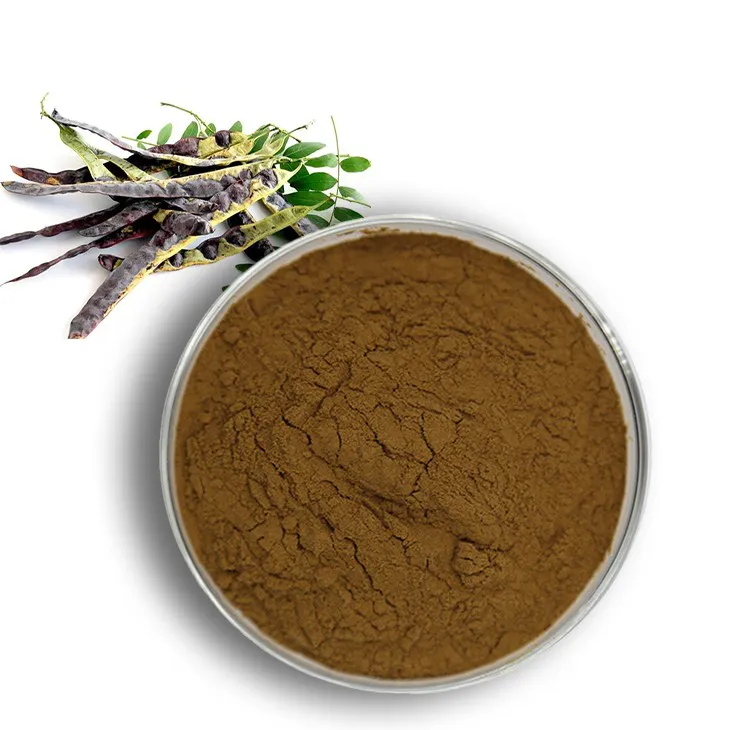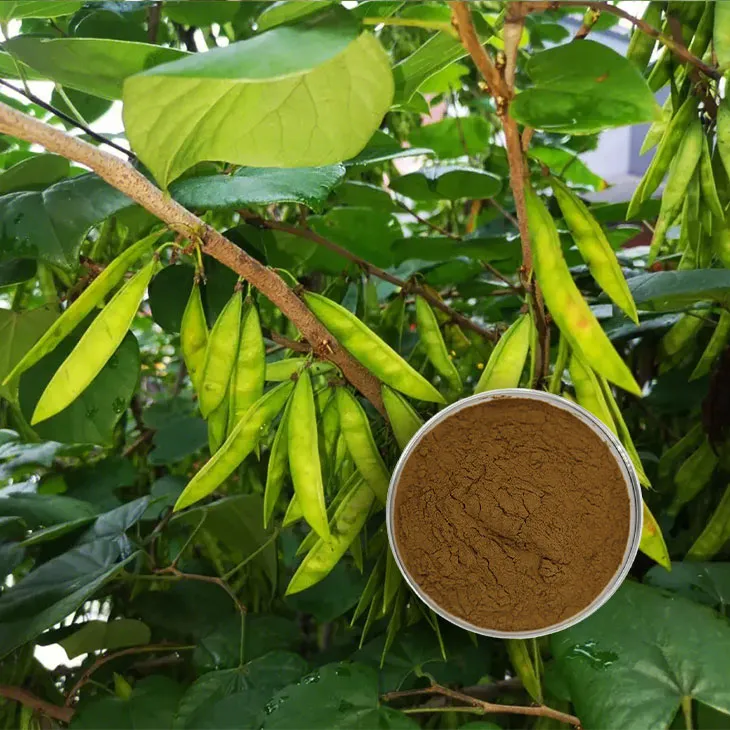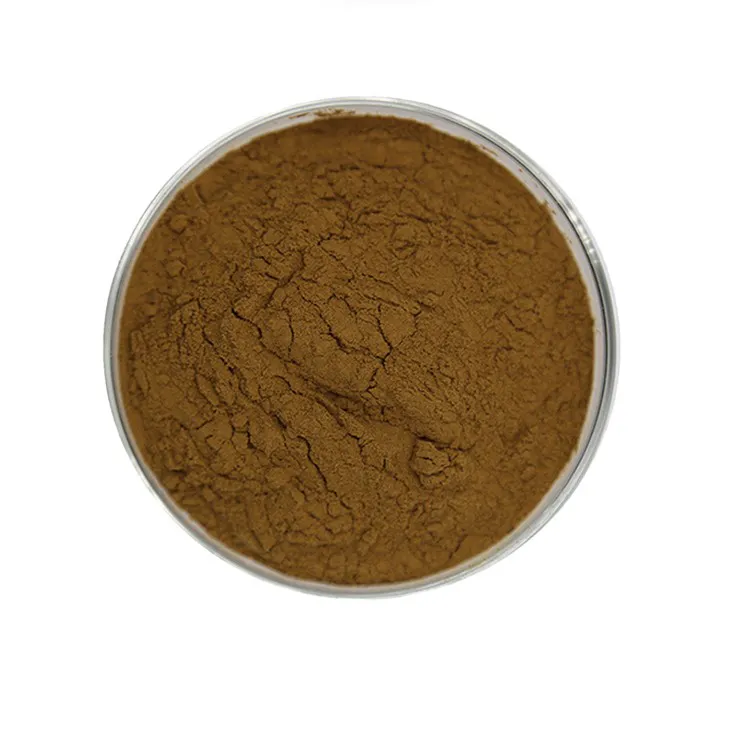- 0086-571-85302990
- sales@greenskybio.com
Sustainable Saponin Extraction: Balancing Efficiency and Environmental Impact
2024-07-18

1. Introduction
Saponins are a diverse group of natural compounds that have gained significant attention in various industries, including pharmaceuticals, cosmetics, and food. They possess a wide range of biological activities such as antioxidant, anti - inflammatory, and antimicrobial properties. However, the extraction of saponins often poses challenges in terms of achieving high extraction efficiency while minimizing environmental impact. This article delves into the importance of sustainable Saponin Extraction and the factors involved in balancing extraction efficiency and environmental concerns.

2. The Significance of Saponins
Saponins play a crucial role in different applications. In the pharmaceutical industry, they are being explored for their potential in treating various diseases. For example, some saponins have shown promise in cancer treatment by interfering with cancer cell growth. In cosmetics, they are used for their skin - enhancing properties, such as moisturizing and anti - aging effects. In the food industry, saponins can act as natural emulsifiers and foaming agents. Given their importance, the demand for saponins is on the rise, which makes sustainable extraction methods all the more necessary.

3. Factors Affecting Sustainable Saponin Extraction
3.1 Choice of Solvents
The choice of solvents is a critical factor in Saponin Extraction. Traditional solvents such as methanol and ethanol are commonly used due to their high solubility for saponins. However, these solvents have environmental drawbacks. Methanol is toxic and can pose risks to human health and the environment if not properly managed. Ethanol, although considered relatively "greener", still requires significant energy for production. Alternative solvents are being explored. For instance, supercritical fluids like supercritical carbon dioxide (scCO₂) offer several advantages. scCO₂ is non - toxic, non - flammable, and has a relatively low environmental impact. It also allows for selective extraction, which can enhance the purity of the extracted saponins. However, the use of scCO₂ requires specialized equipment and higher initial investment, which can be a barrier for small - scale extraction operations.
3.2 Energy Consumption during Extraction
Energy consumption is another important aspect to consider. High - temperature extraction methods, such as Soxhlet extraction, are energy - intensive. These methods often require continuous heating for extended periods, leading to high energy bills and increased carbon emissions. On the other hand, novel extraction techniques like ultrasound - assisted extraction and microwave - assisted extraction have the potential to reduce energy consumption. Ultrasound - assisted extraction uses ultrasonic waves to disrupt plant cells, facilitating the release of saponins. This method can significantly reduce extraction time and energy requirements compared to traditional methods. Microwave - assisted extraction works by using microwaves to heat the sample selectively, which also speeds up the extraction process and reduces energy consumption.
3.3 Waste Management
Waste management in saponin extraction is essential for sustainability. After extraction, there are often residues that contain unextracted components, solvents, and other impurities. If not properly disposed of, these wastes can contaminate the environment. In the case of solvent - based extraction, the recovery and reuse of solvents can reduce waste. For example, through distillation processes, solvents can be purified and reused in subsequent extractions. Additionally, the by - products of saponin extraction can be explored for other applications. For instance, the plant residues left after extraction can be used for biofuel production or as a source of organic fertilizers, thus reducing waste and adding value to the overall extraction process.

4. Research and Innovation in Sustainable Saponin Extraction
4.1 Green Chemistry Approaches
Green chemistry principles are increasingly being applied to saponin extraction. One such principle is the use of renewable feedstocks. Instead of relying on non - renewable sources for solvents or extraction aids, researchers are looking into using plant - based or bio - based materials. For example, some plant - derived oils can be used as alternative solvents or co - solvents in saponin extraction. Another green chemistry approach is the design of more efficient extraction processes that minimize waste generation. This involves optimizing reaction conditions, such as temperature, pressure, and reaction time, to ensure maximum saponin extraction with minimal by - product formation.
4.2 Biotechnology in Saponin Extraction
Biotechnology offers innovative solutions for sustainable saponin extraction. Enzyme - assisted extraction is a promising technique. Enzymes can be used to break down the cell walls of plants, making it easier to extract saponins. This method is more specific than chemical extraction methods and can potentially reduce the need for harsh solvents. For example, cellulase and pectinase enzymes can be used to degrade the cellulosic and pectin components of plant cell walls, respectively, thereby improving saponin extraction efficiency. Moreover, genetic engineering can be used to modify plants to increase their saponin content or to make the extraction process more efficient. By manipulating the genes responsible for saponin biosynthesis, it may be possible to develop plants with higher saponin yields.
4.3 Nanotechnology in Saponin Extraction
Nanotechnology has also found its way into saponin extraction. Nanoparticles can be used to enhance the solubility and bioavailability of saponins. For example, nano - emulsions can be prepared using saponins, which can improve their stability and delivery in pharmaceutical and cosmetic applications. In addition, magnetic nanoparticles can be used in the extraction process. These nanoparticles can be coated with ligands that have an affinity for saponins. After extraction, the nanoparticles can be easily separated from the extract using a magnetic field, which simplifies the purification process and reduces the amount of waste generated.

5. Conclusion
In conclusion, sustainable saponin extraction is a complex but necessary endeavor. Balancing extraction efficiency and environmental impact requires careful consideration of various factors, including the choice of solvents, energy consumption, and waste management. Research and innovation in areas such as green chemistry, biotechnology, and nanotechnology offer promising solutions to make saponin extraction more sustainable. By adopting these sustainable extraction practices, the saponin industry can meet the growing demand for saponins while minimizing its environmental footprint and ensuring the long - term viability of saponin production.
FAQ:
What are the common solvents used in saponin extraction and their environmental impacts?
Common solvents used in saponin extraction include ethanol, methanol, and water. Ethanol and methanol are organic solvents. While they are effective in extracting saponins, they can have environmental impacts. For example, if not properly managed, the production and disposal of these solvents can contribute to air pollution and potential water contamination. Water, on the other hand, is a more environmentally friendly solvent but may not be as efficient in extracting saponins in some cases as organic solvents.
How can energy consumption be reduced during saponin extraction?
Energy consumption during saponin extraction can be reduced in several ways. One way is to optimize the extraction process. For example, using more efficient extraction equipment that can operate at lower energy levels. Another approach is to use alternative energy sources, such as solar energy, if possible, for heating or powering the extraction process. Additionally, proper insulation of the extraction vessels can help reduce heat loss, thus saving energy.
What are the challenges in waste management during saponin extraction?
The waste generated during saponin extraction mainly includes spent solvents, plant residues, and by - products. One challenge in waste management is the proper disposal of solvents. Organic solvents need to be recycled or disposed of in an environmentally friendly manner to prevent pollution. Plant residues also need to be managed, either by composting or other appropriate means. Moreover, if there are any toxic by - products, special treatment is required to ensure they do not harm the environment.
How does research contribute to more sustainable saponin extraction?
Research plays a vital role in promoting more sustainable saponin extraction. It can lead to the discovery of new extraction methods that are more efficient and environmentally friendly. For example, researchers may develop new solvent systems that are less harmful to the environment but still effective in saponin extraction. Research can also help in understanding the chemical and physical properties of saponins better, enabling the optimization of the extraction process to reduce energy consumption and waste generation.
What are the economic implications of sustainable saponin extraction?
Sustainable saponin extraction can have several economic implications. In the long run, it can reduce costs associated with waste management and environmental compliance. For example, by reducing the use of expensive and potentially harmful solvents, companies can save on procurement and disposal costs. Moreover, sustainable extraction methods may also open up new markets for saponin - based products, as consumers are increasingly demanding environmentally friendly products.
Related literature
- Sustainable Extraction of Bioactive Compounds: A Review of Green Technologies for Saponin Recovery"
- "Environmental Impact Assessment of Saponin Extraction Processes: A Comprehensive Study"
- "Innovation in Saponin Extraction: Towards a More Sustainable Future"
- ▶ Hesperidin
- ▶ Citrus Bioflavonoids
- ▶ Plant Extract
- ▶ lycopene
- ▶ Diosmin
- ▶ Grape seed extract
- ▶ Sea buckthorn Juice Powder
- ▶ Fruit Juice Powder
- ▶ Hops Extract
- ▶ Artichoke Extract
- ▶ Mushroom extract
- ▶ Astaxanthin
- ▶ Green Tea Extract
- ▶ Curcumin
- ▶ Horse Chestnut Extract
- ▶ Other Product
- ▶ Boswellia Serrata Extract
- ▶ Resveratrol
- ▶ Marigold Extract
- ▶ Grape Leaf Extract
- ▶ New Product
- ▶ Aminolevulinic acid
- ▶ Cranberry Extract
- ▶ Red Yeast Rice
- ▶ Red Wine Extract
-
Lycopene
2024-07-18
-
Mangosteen extract powder
2024-07-18
-
Beetroot Powder
2024-07-18
-
Kupilu Extract
2024-07-18
-
Yellow Pine Extract
2024-07-18
-
Apricot Powder
2024-07-18
-
Moringa powder
2024-07-18
-
Fig Extract
2024-07-18
-
Marigold Extract
2024-07-18
-
Grape Leaf Extract
2024-07-18





















